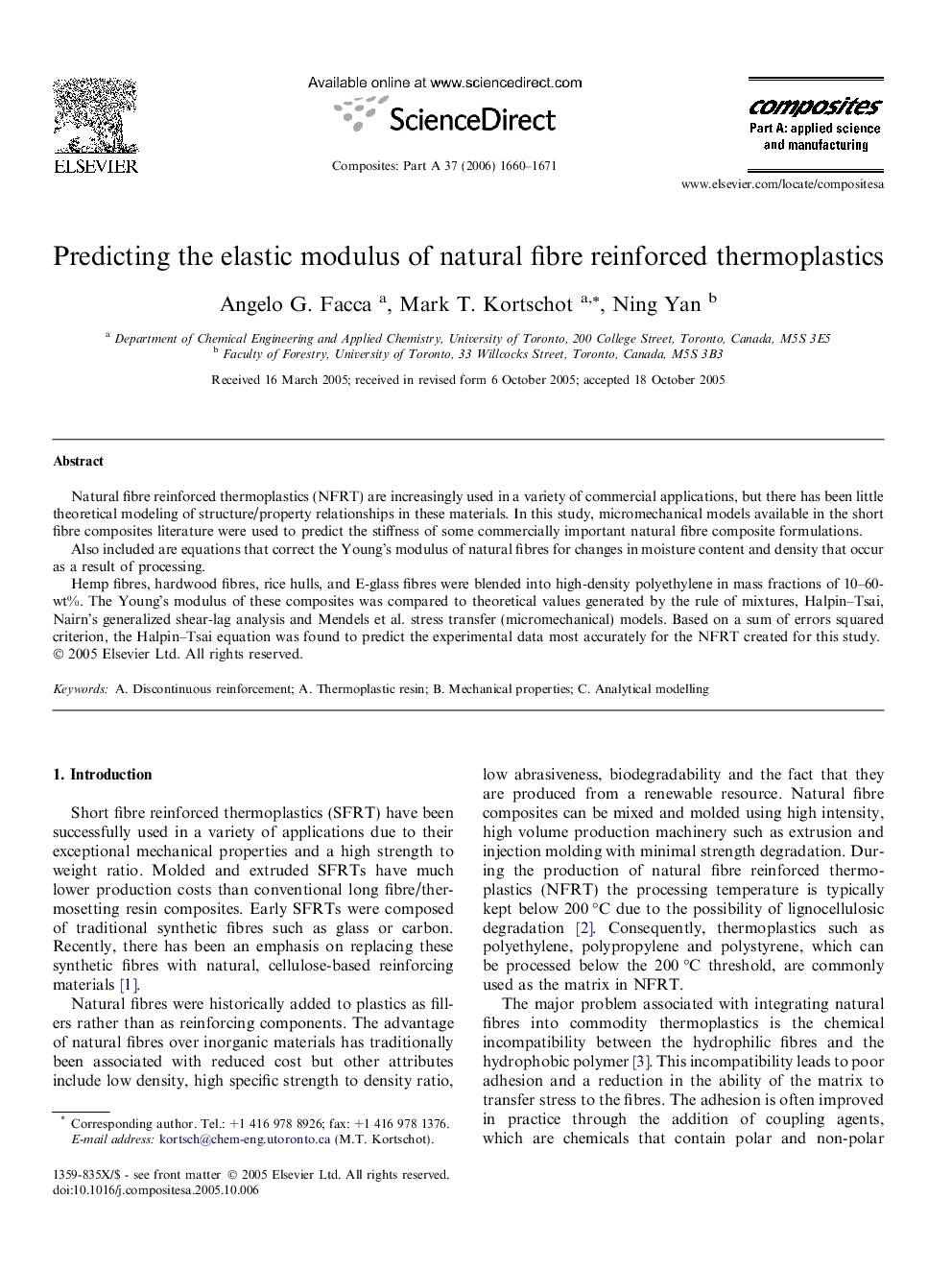| Article ID | Journal | Published Year | Pages | File Type |
|---|---|---|---|---|
| 1468213 | Composites Part A: Applied Science and Manufacturing | 2006 | 12 Pages |
Natural fibre reinforced thermoplastics (NFRT) are increasingly used in a variety of commercial applications, but there has been little theoretical modeling of structure/property relationships in these materials. In this study, micromechanical models available in the short fibre composites literature were used to predict the stiffness of some commercially important natural fibre composite formulations.Also included are equations that correct the Young’s modulus of natural fibres for changes in moisture content and density that occur as a result of processing.Hemp fibres, hardwood fibres, rice hulls, and E-glass fibres were blended into high-density polyethylene in mass fractions of 10–60-wt%. The Young’s modulus of these composites was compared to theoretical values generated by the rule of mixtures, Halpin–Tsai, Nairn’s generalized shear-lag analysis and Mendels et al. stress transfer (micromechanical) models. Based on a sum of errors squared criterion, the Halpin–Tsai equation was found to predict the experimental data most accurately for the NFRT created for this study.
